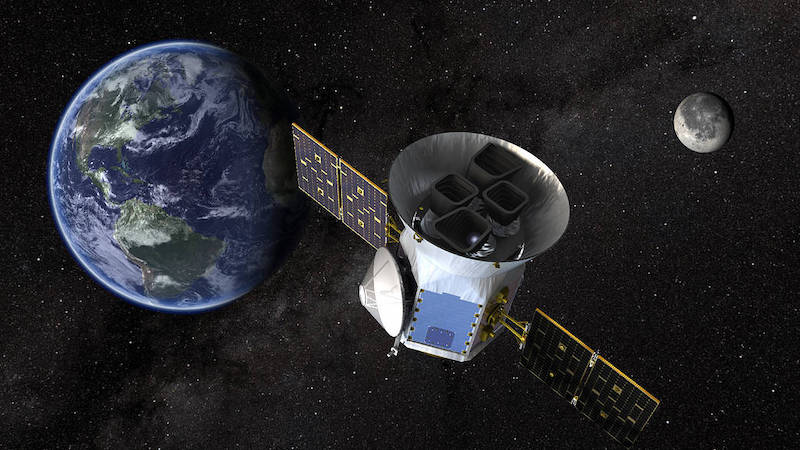
Good news for red dwarf planets
Planets orbiting red dwarf stars may not be dead zones after all. Scientists have long thought that superflares on red dwarf stars decimate most of the atmospheres on planets orbiting too close. Intense radiation would pound these worlds, making habitability unlikely. Now, an international team of astronomers announced August 5, 2021, that red dwarf planets may be safe from superflares after all. How? As it turns out, the flares erupt in the opposite direction from the planets.
The researchers published their peer-reviewed findings in the Monthly Notices of the Royal Astronomical Society on August 5, 2021.
Are planets around red dwarfs habitable?
In recent years, many exoplanets have been discovered orbiting red dwarf stars, the most common kind of star in our galaxy. Could some of them be suitable for life? Indeed, a growing number of them have been found in the habitable zone of their stars. That’s exciting, because this region has temperatures that can allow liquid water on the surfaces of rocky worlds.

Red dwarfs are very volatile, emitting huge flares of deadly radiation. Unfortunately, that radiation can strip a planet of its atmosphere if it’s too close to the star. For this reason, scientists have long thought that most planets orbiting red dwarfs would be rendered uninhabitable.
Red dwarf planets may be spared after all
The new study, however, led by Ekaterina Ilin at Astrophysics Potsdam (AIP) in Germany, shows that these planets might not be in as much danger after all. How is that possible? Usually, planets tend to orbit around or close to the equatorial plane of their stars. But Ilin and her team found that the superflares erupt from the poles of the stars. The new observations were based on data from NASA’s Transiting Exoplanet Survey Satellite (TESS).
As Ilin explained:
We discovered that extremely large flares are launched from near the poles of red dwarf stars, rather than from their equator, as is typically the case on the sun. Exoplanets that orbit in the same plane as the equator of the star, like the planets in our own solar system, could therefore be largely protected from such superflares, as these are directed upwards or downwards out of the exoplanet system. This could improve the prospects for the habitability of exoplanets around small host stars, which would otherwise be much more endangered by the energetic radiation and particles associated with flares compared to planets in the solar system.

‘Polar spots’ and superflares
Previously, scientists had suspected but not confirmed the existence of “polar spots,” where red dwarfs could emit flares. Now, the new study provides the first evidence that such flares do erupt closer to the poles, not the equator. This has significant implications for the habitability of red dwarf planets. These dark spots and flares are the manifestation of dynamic magnetic fields around the stars.
So, how did the researchers find them? They analyzed white-light flares – flashes of white light accompanying some solar flares – on fast-rotating red dwarfs. The flares lasted long enough to have their brightness modulated by the rotation of the stars. From that, the latitude of the flares could finally be accurately determined. According to Katja Poppenhäger at AIP:
I’m particularly excited that we were finally able to substantiate the existence of polar spots for these fast-rotating stars. In the future, this will help us to understand their magnetic field structure better.

Four red dwarfs tell the story
Only four out of over 3,000 red dwarfs were suitable for the new observation methods, but the result is still significant. The flares on all four occurred above 55 degrees latitude, close to the poles. The chances of all four randomly being at such high altitudes is about one in a thousand. This means that this is likely a normal and common feature of red dwarfs.
This is an exciting finding, since many planets are being discovered around red dwarfs, including rocky ones in the habitable zone. The fact that these stars are so active may not be the death knell for some of those worlds as had been assumed. If life ever started on any of those planets, it may now have a much better chance of not only surviving, but flourishing.
Bottom line: Planets orbiting red dwarf stars could still be habitable despite superflares of intense radiation coming from the stars. It all has to do with the direction the flares are erupting in.
Source: Giant white-light flares on fully convective stars occur at high latitudes
Source (preprint): Giant white-light flares on fully convective stars occur at high latitudes











